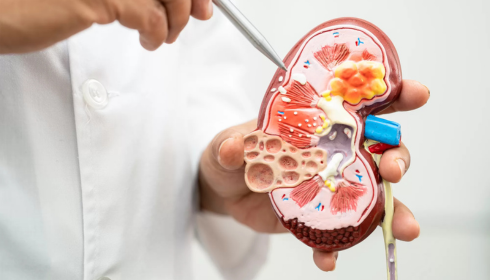Kidney stones are a common and painful condition affecting millions of people worldwide. These hard mineral and salt deposits form in the kidneys and can cause excruciating pain when they pass through the urinary tract. Fortunately, modern medicine offers a variety of kidney stone treatment options that cater to different types, sizes, and severity levels of stones.

What Causes Kidney Stones?
Kidney stones are primarily caused by the crystallization of substances in the urine, such as calcium, oxalate, and uric acid. Factors contributing to their formation include:
- Dehydration
- High intake of salt and sugar
- Family history
- Obesity
- Certain medications and medical conditions
Understanding these causes is crucial for both treatment and prevention.
Common Symptoms of Kidney Stones
While some kidney stones remain small and pass without causing symptoms, larger stones can result in intense discomfort. Common symptoms include:
- Severe pain in the back or side
- Blood in the urine
- Frequent urination
- Nausea and vomiting
- Fever and chills (in case of infection)
If you experience any of these symptoms, it’s essential to consult a healthcare professional for proper diagnosis and treatment.
Diagnosis
Doctors typically diagnose kidney stones through imaging techniques such as CT scans, ultrasounds, or X-rays. Urine and blood tests may also be conducted to determine the stone’s composition and underlying causes.
Treatment Options for Kidney Stones
The treatment approach depends on the size, type, and location of the kidney stone. Here are the most common treatment options:
1. Home Remedies and Medications
For small stones, non-invasive treatments like drinking plenty of water (2 to 3 liters daily) may help flush them out naturally. Doctors may also prescribe medications like alpha-blockers to relax the ureter muscles and ease the stone’s passage. Pain relievers such as ibuprofen or acetaminophen can manage discomfort during this process.
2. Extracorporeal Shock Wave Lithotripsy (ESWL)
ESWL is a non-surgical procedure that uses sound waves to break stones into smaller pieces, making them easier to pass through urine. It is highly effective for medium-sized stones and involves minimal recovery time.
3. Ureteroscopy
In this procedure, a thin scope is inserted through the urethra to locate and remove or break the stone using a laser. Ureteroscopy is ideal for stones located in the ureter or kidney and is done under general anesthesia.
4. Percutaneous Nephrolithotomy (PCNL)
For very large or complex stones, PCNL is the preferred surgical method. A small incision is made in the back to allow direct access to the kidney, and the stone is removed using special instruments. While more invasive, PCNL offers a high success rate.
5. Parathyroid Surgery
In rare cases where kidney stones are caused by overactive parathyroid glands (which control calcium levels), surgery may be required to remove the overactive gland(s).
Prevention is Key
Preventing kidney stones is as important as treating them. Here are a few prevention tips:
- Stay well hydrated throughout the day
- Reduce salt and animal protein intake
- Limit foods high in oxalates such as spinach and beets
- Maintain a healthy weight
- Take prescribed medications if prone to stone formation
Dietary changes and lifestyle adjustments can significantly reduce the risk of recurring stones.
When to See a Doctor
Immediate medical attention is required if you:
- Have unbearable pain
- Notice blood in your urine
- Experience fever or chills
- Face difficulty passing urine
Early intervention can prevent complications such as kidney infections or damage.
Conclusion
Kidney stones can be incredibly painful, but with the right approach, they are treatable and preventable. From simple home remedies to advanced surgical techniques, today’s healthcare system offers multiple kidney stone removal options suited for every individual. The key lies in early diagnosis, proper treatment, and a strong commitment to lifestyle changes. If you suspect you have a kidney stone, consult your healthcare provider to determine the best treatment plan tailored to your needs.
